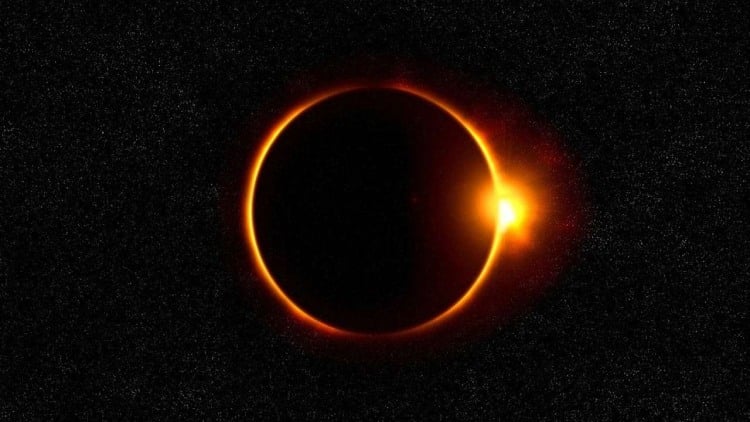Solar eclipse captured by NASA in space
Sat 02 Jul 2022
Washington: NASA‘s Solar Dynamics Observatory (SDO) has captured the Moon passing in front of the Sun recording the 35-minute partial solar eclipse.
“At the peak of the eclipse, the Moon covered 67 per cent of the sun, and lunar mountains were backlit by solar fire,” the report said.
The high-resolution images captured by the SDO will help scientists better understand the telescope.
The images “reveal how light diffracts around SDO’s optics and filter support grids. Once these are calibrated, it is possible to correct SDO data for instrumental effects and sharpen images of the Sun even more than before”, the report said.
Since its launch in 2010, NASA’s SDO has studied how the Sun creates solar activity and drives space weather — the dynamic conditions in space that impact the entire solar system, including Earth.
SDO’s measurements of the Sun — from the interior to the atmosphere, magnetic field, and energy output — have greatly contributed to our understanding of our closest star.
The spacecraft’s observations start in the interior of the Sun with the solar dynamo — the churning of the Sun’s interior that creates its magnetic field and drives space weather. The SDO then observes the solar surface to directly measure the magnetic field and the solar atmosphere to understand how magnetic energy is linked to the interior and converted to space weather-causing events.
It also measures the extreme ultraviolet irradiance of the Sun which is a key driver to the structure and composition of the Earth’s upper atmosphere. NASA Solar Eclipse capture space NASA Solar Eclipse captures space
About Solar Dynamics Observatory
On Feb. 11, 2010, NASA launched the Solar Dynamics Observatory, also known as SDO. SDO keeps a constant eye on the sun, helping us track everything from sunspots to solar flares to other types of space weather that can have an impact on Earth. For instance, solar activity is behind the aurora, one of Earth’s most dazzling natural events. SDO is designed to help us understand the Sun’s influence on Earth and Near-Earth space by studying the solar atmosphere on small scales of space and time and in many wavelengths simultaneously.
Source: Agencies

 Apr 30 2024
Apr 30 2024













